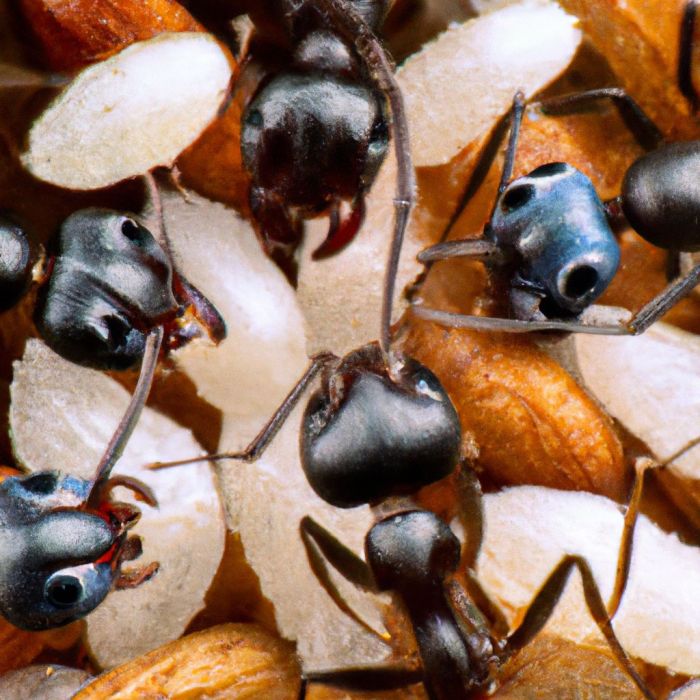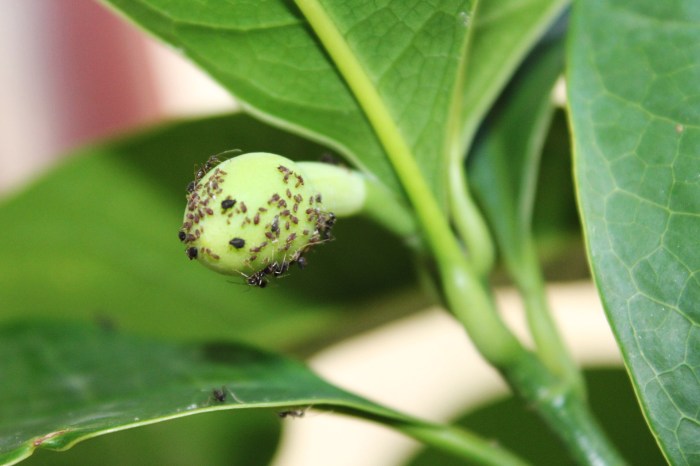Ant-Seed Interactions: A Comprehensive Overview
Do ants plant seeds – Ants and seeds engage in a complex and mutually beneficial relationship, significantly impacting plant reproduction and ecosystem dynamics. This interaction, often involving seed dispersal, is a cornerstone of many plant communities worldwide. This overview explores the multifaceted nature of ant-seed interactions, examining the diverse ways ants interact with seeds, their ecological roles, and the consequences for both ants and plants.
Ant-Seed Interactions: A General Overview

Source: autoblogging.ai
Ants interact with seeds in various ways, primarily through seed dispersal (myrmecochory) and seed predation. Myrmecochory involves ants carrying seeds to their nests, often storing them in underground chambers. This process facilitates seed dispersal away from the parent plant, reducing competition and increasing the chances of seedling establishment. Conversely, seed predation occurs when ants consume the entire seed, preventing germination.
Numerous ant species, such as those in the genera
- Aphaenogaster*,
- Formica*, and
- Lasius*, are known for their seed-dispersing behavior. Their specific behaviors range from simple carrying of seeds to complex interactions involving specialized seed appendages. Ecologically, ants play a crucial role in seed dispersal, contributing to plant community structure and genetic diversity. Seed dispersal offers plants the advantages of reduced competition near the parent plant and increased access to diverse habitats.
However, the risks include seed predation and the potential for dispersal to unsuitable locations.
Seed Selection and Transportation by Ants
Ants exhibit selectivity in the seeds they transport, often favoring those with specific characteristics. Seeds with elaiosomes, nutrient-rich appendages, are particularly attractive. The size and weight of seeds also influence selection; ants generally carry seeds within a certain size and weight range determined by their body size and strength. Ants employ various mechanisms to transport seeds, primarily using their mandibles to grasp and carry the seeds back to their nests.
A hypothetical experiment to test ant seed selection could involve offering ants a range of seeds with varying elaiosome sizes, seed weights, and seed types. By measuring the number of seeds taken of each type, researchers could determine which characteristics are most influential in ant seed selection.
| Ant Species | Seed Size Range (mm) | Seed Weight Range (mg) | Notes |
|---|---|---|---|
| Aphaenogaster senilis | 1-3 | 0.5-5 | Prefers seeds with elaiosomes |
| Formica fusca | 2-5 | 2-10 | Carries larger seeds than A. senilis |
| Lasius niger | 0.5-2 | 0.1-2 | Selects smaller seeds |
| Messor barbarus | 3-8 | 10-50 | Specialized in harvesting larger seeds |
Ants and Seed Germination
Ant activity can significantly influence seed germination rates, both positively and negatively. The removal of seeds from the parent plant by ants reduces competition for resources, leading to higher germination rates in some cases. However, ants may also damage seeds during transportation or storage, affecting germination negatively. Environmental factors such as soil moisture, temperature, and light availability interact with ant activity to influence germination success.
Studies have demonstrated that ant dispersal can enhance plant reproduction by increasing the spatial distribution of seeds and the establishment of new plants.
- Benefits of ant seed dispersal: Increased seedling establishment, reduced competition, enhanced genetic diversity.
- Drawbacks of ant seed dispersal: Seed predation, potential dispersal to unsuitable habitats, damage to seeds during transport.
The Role of Elaiosomes, Do ants plant seeds

Source: needpix.com
Elaiosomes are lipid- and protein-rich appendages found on many myrmecochorous seeds. They serve as a crucial attractant for ants, providing a nutritional reward for seed dispersal services. The chemical composition of elaiosomes varies, with fatty acids, proteins, and carbohydrates being major components. Different ant species may exhibit varying preferences for elaiosomes with different compositions.
A typical elaiosome is a fleshy, often white or yellowish appendage attached to the seed. It is typically ovoid or irregular in shape and has a somewhat granular texture. Its structure often includes specialized cells containing lipid droplets and other nutrient-rich substances. The elaiosome’s surface may have a slightly oily or sticky texture, further aiding in its attraction to ants.
While ants don’t actively plant seeds in the way humans do, they do inadvertently disperse them. Their behavior often involves carrying seeds to their nests, a process that can lead to unintentional germination. This raises the question of scale: if ants can unintentionally cultivate seeds, then considering the scale of planting, you might wonder, can you plant seeds in a large pot ?
The answer, often, is yes, offering a larger space for root development. Therefore, whether it’s an ant or a human, successful seed germination depends on suitable conditions.
Ants and Seed Predation
While ants are primarily known for seed dispersal, they can also act as seed predators. Whether an ant disperses or consumes a seed depends on several factors, including seed size, elaiosome size and quality, and the ant species’ nutritional needs. Plants may employ various strategies to minimize seed predation, such as producing seeds that are too large or too small for certain ant species to carry away, or by producing defensive chemicals.
Ant seed predation can have significant ecological consequences, reducing plant reproductive success and potentially altering plant community composition. The ecological impacts of seed predation contrast sharply with those of seed dispersal; predation removes seeds from the reproductive pool, while dispersal promotes seedling establishment and potentially increased plant fitness.
The Impact of Habitat on Ant-Seed Interactions
Habitat type significantly influences ant-seed interactions. Factors such as vegetation structure, soil type, and disturbance regimes affect ant abundance and diversity, and consequently, the effectiveness of seed dispersal. Habitat fragmentation can disrupt ant-mediated seed dispersal by isolating plant populations and reducing ant movement. Human activities, such as deforestation and urbanization, can negatively impact ant populations and seed dispersal services.
Changes in environmental conditions, such as climate change, can also alter the effectiveness of ant seed dispersal by influencing ant behavior, seed production, and seedling establishment.
Clarifying Questions: Do Ants Plant Seeds
What is myrmecochory?
Myrmecochory is the ecological interaction between plants and ants where ants disperse plant seeds.
Do all ant species interact with seeds?
No, only certain ant species exhibit seed-dispersing or seed-predatory behaviors. The interaction is species-specific.
How do plants attract ants to their seeds?
Many plants produce elaiosomes, nutrient-rich appendages on seeds, specifically to attract ants.
Can ants damage seeds during dispersal?
While ants generally aim to remove the elaiosome, there is a potential for damage to the seed itself during transport.
